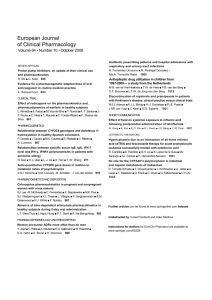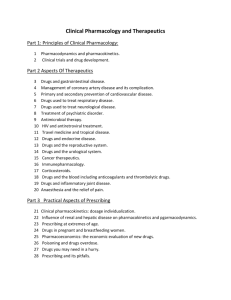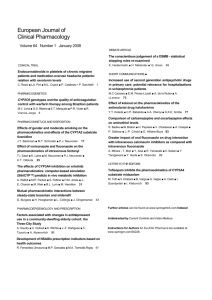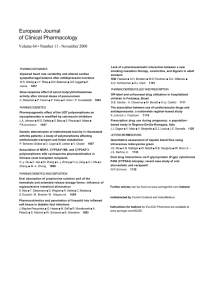415 PHT Plasma Level – Time Curve Practical Dr. Ahmed Alalaiwe
advertisement
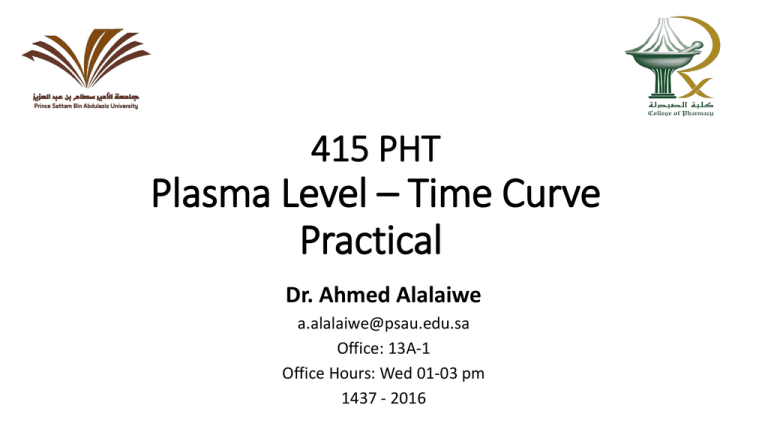
415 PHT Plasma Level – Time Curve Practical Dr. Ahmed Alalaiwe a.alalaiwe@psau.edu.sa Office: 13A-1 Office Hours: Wed 01-03 pm 1437 - 2016 Basic Pharmacokinetics Quiz • 1) Pharmacokinetic models are useful to: A) describe concentration-time data sets B) predict drug serum concentrations after several doses or after different routes of administration C) calculate pharmacokinetics parameters (clearance, volume of distribution, half-life) D) A and C E) A , B and C Basic Pharmacokinetics Quiz • 2) Pharmacokinetics: what the body does to the drug A) true B) False Basic Pharmacokinetics Quiz • 3) What ( is/are ) the consideration(s) for ABSORPTION A) Rate B) Extent C) Route of administration D) All of the above E) None of the above Basic Pharmacokinetics Quiz • 4) Oral administration is used mainly for systemic effect. However, is occasionally used for local effect such as diarrhea and constipation A) True B) False Basic Pharmacokinetics Quiz • 5) Analysis of drug in urine data is useful because A) Blood samples may not be convenient and allow to study the elimination B) It is an invasive measurement C) All of the above Basic Pharmacokinetics Quiz • Answers: • 1) E • 2) A • 3) D • 4) A • 5) A Concentration-Time Profile Concentration-Time Profile Route of Administrations • The aim is to : • Get the drug into the circulation • Administer it locally • Examples: • Parenteral ( IV, IM, Interracial, intra-arterial, SC ) • Topical • Oral • Inhalation Route of Administrations Route of Administrations Intravenous (IV) Intravenous (IV) • Advantages: • Easy access to rapid administration of solutions • Continuous or intermittent administration of nutrients • Rapid changes in circulatory system • East to monitor delivery of fluids, electrolytes and nutrients ( for those with impaired GI tracts.) • Disadvantages: • Invasive procedure can cause infection, bleeding adverse side effects • More costly than oral or injectable ( IM, SC ) substances • One IV site has a limited use/time: usually no more than 72 hours. Intramuscular (IM) Intramuscular (IM) • Advantages: • MORE CONSISTENT absorption vs oral or sub-cutaneous • Certainty of administration • Depot or sustained effect possible, methylprednisolone acetate, pivalate) • IM is a viable route for unconscious, vomiting or fractious patients; last resort for dehydrated patients. • MOST of the time, IM = IV for efficacy / potency • Disadvantages: • Pain • Muscle Damage • Dose cannot be recovered • Cant stop it! Subcutaneous (SC) Subcutaneous (SC) • Advantages: • Relatively safe • High bioavailability • Can be administered by the patient himself • Disadvantages: • Limited volume • variability • Dose cannot be recovered • Cant stop it! ORAL (p.o) ORAL (p.o) • Advantages: • Convenient, cheap, no need for sterilization, variety of dose forms • You can get the dose back if you move fast enough • Disadvantages: • Slow absorption • variability • First-pass effect • Undesired GI reactions (nausea, vomiting) Rectal Rectal • Advantages: • Access to GI absorption in unconscious or vomiting patients • Drug can be recovered before absorption is complete • Disadvantages: • Slow absorption • variability • Inconvenient Take-home message •What is Interosseous route of administration? •What are the advantages and disadvantages of Interosseous route of administration?
